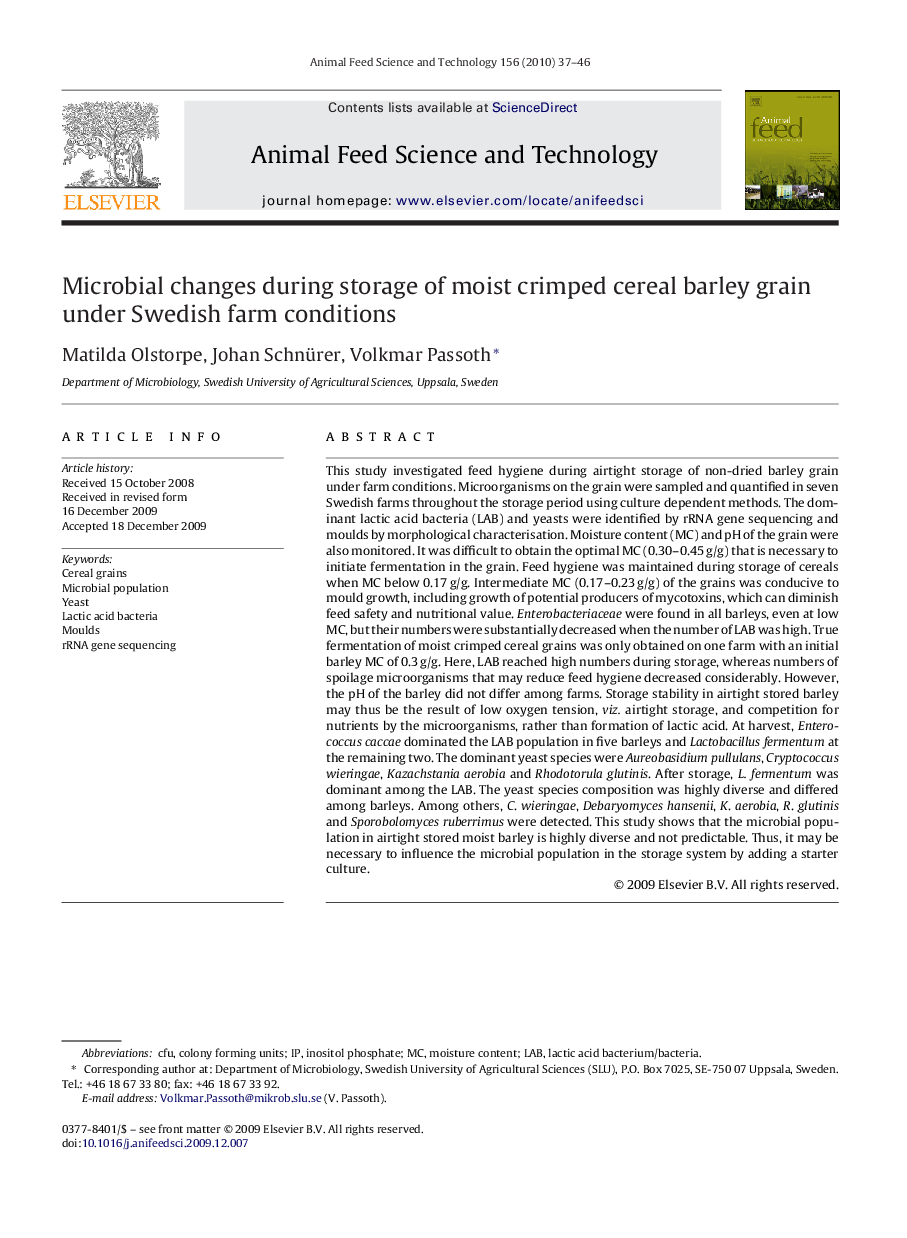| کد مقاله | کد نشریه | سال انتشار | مقاله انگلیسی | نسخه تمام متن |
|---|---|---|---|---|
| 2420230 | 1552449 | 2010 | 10 صفحه PDF | دانلود رایگان |

This study investigated feed hygiene during airtight storage of non-dried barley grain under farm conditions. Microorganisms on the grain were sampled and quantified in seven Swedish farms throughout the storage period using culture dependent methods. The dominant lactic acid bacteria (LAB) and yeasts were identified by rRNA gene sequencing and moulds by morphological characterisation. Moisture content (MC) and pH of the grain were also monitored. It was difficult to obtain the optimal MC (0.30–0.45 g/g) that is necessary to initiate fermentation in the grain. Feed hygiene was maintained during storage of cereals when MC below 0.17 g/g. Intermediate MC (0.17–0.23 g/g) of the grains was conducive to mould growth, including growth of potential producers of mycotoxins, which can diminish feed safety and nutritional value. Enterobacteriaceae were found in all barleys, even at low MC, but their numbers were substantially decreased when the number of LAB was high. True fermentation of moist crimped cereal grains was only obtained on one farm with an initial barley MC of 0.3 g/g. Here, LAB reached high numbers during storage, whereas numbers of spoilage microorganisms that may reduce feed hygiene decreased considerably. However, the pH of the barley did not differ among farms. Storage stability in airtight stored barley may thus be the result of low oxygen tension, viz. airtight storage, and competition for nutrients by the microorganisms, rather than formation of lactic acid. At harvest, Enterococcus caccae dominated the LAB population in five barleys and Lactobacillus fermentum at the remaining two. The dominant yeast species were Aureobasidium pullulans, Cryptococcus wieringae, Kazachstania aerobia and Rhodotorula glutinis. After storage, L. fermentum was dominant among the LAB. The yeast species composition was highly diverse and differed among barleys. Among others, C. wieringae, Debaryomyces hansenii, K. aerobia, R. glutinis and Sporobolomyces ruberrimus were detected. This study shows that the microbial population in airtight stored moist barley is highly diverse and not predictable. Thus, it may be necessary to influence the microbial population in the storage system by adding a starter culture.
Journal: Animal Feed Science and Technology - Volume 156, Issues 1–2, 28 February 2010, Pages 37–46